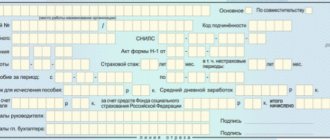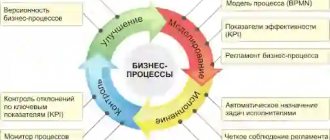What are labor standards
Labor standards must be established when determining the amount of time required to complete a certain amount of work. Working time is a generally accepted measure of the amount of labor.
Labor standardization is regulated at the legislative level and is determined by Chapter 22 of the Labor Code of the Russian Federation and the Regulations on the organization of labor standardization in the national economy. The system of labor standards is used in enterprises to optimize and increase the productivity of the work process.
The concept of “norm” implies the amount of time spent by a specialist on the implementation of certain parts of the work or production process. Article 160 of the Labor Code regulates the following types of labor standards:
- time standards;
- production standards;
- service standards.
The regulation on labor standards additionally distinguishes the headcount rate and the headcount standard.
What is the purpose of labor standardization and the role of the personnel officer in this process?
The main indicator associated with labor standardization is its productivity at each workplace, which, in turn, is inextricably linked with a set of organizational measures and methods aimed at making the work of each employee extremely profitable for the owners of the organization, who receive from it benefits in the form of dividends.
Thus, in order to standardize labor, it is necessary to study the dynamics of the workload of workers in different departments, including the personnel department, and persons performing individual work. Analysis of the daily work intensity of a specific employee (employees of individual departments, the organization as a whole) is the basis for optimizing the number of personnel (clause 2, part 1, article 81 of the Labor Code of the Russian Federation) or changing the duration of his work per day (shift - article 93 of the Labor Code of the Russian Federation) in the manner provided for in Art. 74 Labor Code of the Russian Federation.
Before collecting information about the workload of employees, the employer is obliged to comply with the requirements of Art. 163 of the Labor Code of the Russian Federation: normal working conditions must be ensured at each certified workplace. Such conditions, in particular, include: good condition of premises, structures, machines, technological equipment and equipment; timely provision of technical and other documentation necessary for work; proper quality of materials, tools, other means and items necessary to perform the work, their timely provision to the employee; working conditions that meet labor protection and production safety requirements.
The participation of personnel department employees in the process of labor standardization, as a rule, consists in the fact that they prepare lists of workers whose work, according to the order of the organization, is subject to standardization, and provide labor standardization specialists with time sheets of persons whose work is subject to verification of workload during the working day (shift). Subsequently, the HR department takes measures to employ “extra” workers within the organization (dismiss them) or recruit new ones if labor standards have shown that the workload at individual workplaces exceeds the labor intensity indicators allowed by standards.
Setting labor standards
Labor standards are determined by regulatory materials, which include labor standards. Labor standards represent established values of labor costs for the implementation of any parts of the work, maintenance of equipment, workplace, structural units and teams, as well as the number of workers required to carry out management functions and the volume of labor, which is taken as a unit of measurement. Labor standards are determined by specific organizational and technical conditions and production factors.
Also, labor standards should include standards for the modes of use of equipment and machinery, according to which the optimal nature of the flow of the work process is established and the main time is determined (machine-manual and machine).
Regulatory materials are the basis for determining reasonable labor costs. The following requirements apply to them:
- compliance with modern technological level;
- ensuring high quality of defined labor standards;
- compliance with a certain level of accuracy;
- ensuring an optimal level of labor intensity;
- convenience of calculating labor costs and calculating labor intensity;
- ensuring application in automated systems.
In this case, the establishment of labor standards is carried out:
- for individual operations;
- into interrelated groups of operations;
- for a set of works.
In accordance with this, the concepts of operational, integrated and comprehensive labor standards are defined. The degree of division or enlargement of standards is determined by the conditions of the labor process in production.
Standard industry labor standards are established in accordance with orders and regulations and are determined by a specific industry of production and other labor activity. In addition to industry labor standards, there are also intersectoral labor standards that regulate the work process at the intersection of industries.
The professional labor standards approved by the institution determine separate standards for women. Also, isolated labor standards are typical for work performed in harmful and dangerous conditions.
It is worth noting that, according to the law, the introduction of new labor standards or changes to existing ones should be carried out only if the level of organization and technological support of the work process corresponds to the modern level.
If new labor standards are introduced without notifying workers and in violation of the proper execution of the order, they will not have legal force. The development of labor standards for piecework payment is determined by the prices established by the employer per unit of production (volume of work).
Rationing tasks
An effective organization of labor standards at an enterprise should contribute to the solution of a number of complex tasks, ultimately aimed at increasing the performance of the company and obtaining maximum profits. In modern economic conditions, the tasks of labor standardization at an enterprise include:
- Determining the required amount of working time spent on performing various technological operations, labor and production processes. The solution to the problem is achieved through constant analysis of the work directly performed and bringing its forms and methods to a level corresponding to the modern level of development of technology, technology and production organization.
- Determining the optimal balance between production standards, assignments given to the workforce and wages.
- Planning for an equal amount of labor effort expended in a variety of work processes. The solution to the problem in the future should contribute to compliance with the principle of equal pay for equal work.
Future tasks in the field of labor regulation include:
- Determination of labor costs by industry type.
- Analysis of the economic feasibility of reducing labor costs in the production of a unit of product.
The first group of promising tasks is related to issues of enterprise competitiveness in terms of the ratio of cost levels and compliance with product quality. The second group is solved by determining the level of demand for products in accordance with price and quality.
Subscribe to our newsletter
Yandex.Zen VKontakte Telegram
Time standards
Social norms in the implementation of work activities do not relate to the concepts of working time, but determine the rules of behavior of workers at the place of work. Recommendations regarding social labor standards indicate proper and acceptable behavior in the workplace.
The time standard is the amount of work time that is established for the purpose of carrying out a unit of work by a worker or group of workers (in a particular case, a team) of a certain level of qualifications under the established conditions for organizing the work process.
The time standard includes the standard of preparatory and final time (for preparation and completion of the labor process), the standard of piece time. The standard piece time includes:
- operational time;
- work place servicing time;
- time for rest and satisfaction of personal needs.
Production rate and headcount standard
The production rate is a fixed amount of work (for example, the number of units of goods) that a worker or group of workers with a certain level of qualifications must carry out (produce) per unit of labor time under the established conditions for organizing the work process. The production rate is considered a derivative of the time rate and is determined by dividing the working time of workers during the accounting period by the time rate.
The headcount standard is an established calculated value, represented by the number of workers that can be kept to work at a specific facility to implement a specific volume of work.
About legislative and economic aspects
First of all, article 129 of the Labor Code is of interest to us. If only because it contains a definition of wages. According to current legislation, it is a remuneration for work and depends on the qualifications of the employee, as well as the quality, quantity, difficulties and conditions in which he has to work. In addition, compensation payments are added to the salary. These include allowances and additional payments for work in conditions that deviate from normal. These are special climatic zones, areas with radioactive contamination, etc.
Mention should also be made of incentive payments, which include bonuses, allowances, additional payments and other forms of incentives. In this case, it is necessary to distinguish between nominal and real wages. In the first case, it means the amount of money that the employee receives for a certain period. For example - twenty thousand rubles. Real wages are equivalent, which takes into account the amount of consumer services and goods that can be purchased for the nominal value received.
It is desirable that both species grow constantly. Moreover, real wages have priority over nominal wages. But in practice this does not always work out. There is often a situation when nominal payment increases, but real payment decreases. This happens due to inflationary processes. Aligning the position is not as easy as it might seem at first glance. After all, payroll settlements with personnel must simultaneously satisfy people’s needs for a standard of living and not bankrupt employers. It will not be possible to significantly infringe on the rights of one of the groups without significant damage to the entire economy. Therefore, the state has chosen a policy that affects only some elements of labor regulation, leaving a wide field for interaction and the search for compromise solutions.
Standard of service
The service standard is the number of production facilities (places of work, pieces of equipment) that a worker or group of workers with a certain level of qualifications must service during a unit of labor time under fixed conditions for organizing the work process.
Service standards have been developed to regulate the work activities of workers who maintain equipment, production areas, workplaces, electronic computer equipment, as well as for cleaners.
In addition, service standards establish production standards in the case of multi-machine work and can be used when it is inappropriate to standardize the work of workers based on production standards (with full automation).
Standardized task
A standardized task is a fixed composition and volume of work that must be performed by a worker or group of workers in a specific time interval. Also, a standardized task can be defined as the amount of time in which a fixed amount of work needs to be completed, taking into account all the requirements for the quality of work.
Standardized tasks can be defined as a production rate per unit of time, established in the form of a fixed list of work. Standardized tasks regulate the composition, order and frequency of work and are designed to specify the standards of service and number.
The use of standardized tasks in the work process helps to increase the level of labor productivity. Standardized tasks are set for different periods of time - a shift, a month, or the period for complete completion of a certain amount of work.










